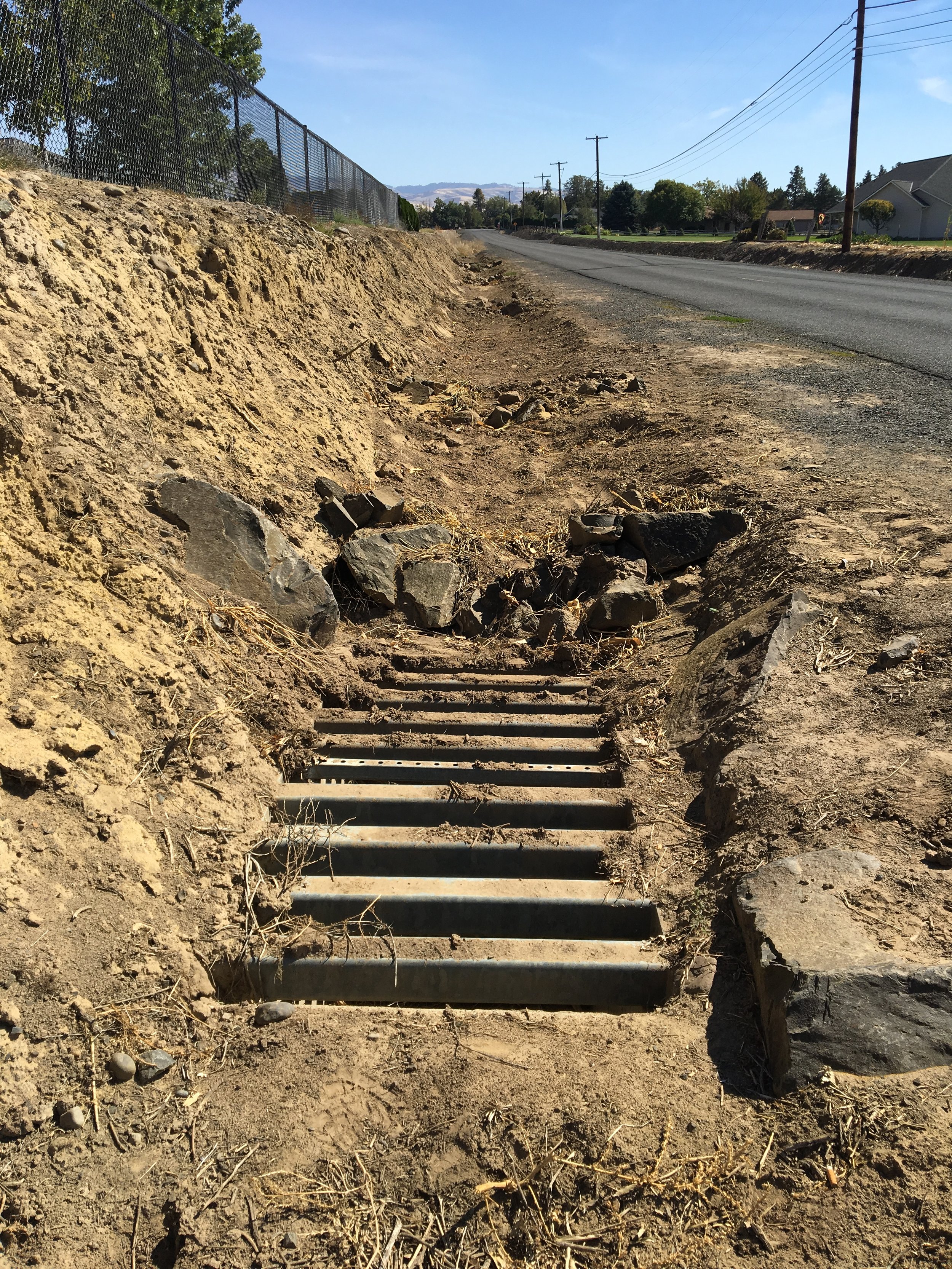Aspect assisted Maxum Petroleum in achieving ISGP compliance at its diesel fueling and petroleum fuel/lubricant shipping and receiving facility located on Harbor Island in Puget Sound, Washington. A systematic and cost-effective approach was used to evaluate stormwater infrastructure upgrades, and treatability testing was performed to select the optimum stormwater treatment system. The new system features pressurized filtration and adsorptive media filtration. Initial water quality monitoring results indicate all ISGP water quality benchmarks were easily achieved.
Seattle-Tacoma International Airport (STIA) Infiltration Feasibility Assessment
To comply with its NPDES permit, the Port of Seattle is developing LID BMP guidelines for future development and redevelopment projects at STIA. In support, Aspect identified shallow and subsurface stormwater infiltration opportunities using existing GIS layers, geologic data, and other relevant data. Infiltration feasibility was based on evaluation of factors that affect infiltration potential and identification of units that represent unique combinations of these factors. The results were used to create infiltration feasibility maps for both the shallow and subsurface hydrostratigraphic units, and are now being incorporated into the Port’s Stormwater Management Manual for Aviation Division Property.
Aspect's Tom Atkins presented the STIA infiltration assessment project at the 2017 Municipal Stormwater Conference (MuniCon) Infiltration Workshop.
Ameron Industrial Stormwater General Permit
Aspect assisted a concrete pole manufacturer in planning and implementing a new stormwater treatment system to comply with the requirements of Ecology’s ISGP. We evaluated stormwater infrastructure upgrades and treatment options, and identified actions for achieving cost effective, long-term compliance with Industrial Stormwater General Permit (ISGP) requirements. The new stormwater management system features StormwateRx’s Aquip Enhanced Stormwater Filtration System, downspout media filters, and catch basin insert filters. Initial water quality monitoring results indicate all ISGP water quality benchmarks were easily achieved.
City of Moscow Stormwater Utility Study
Aspect is initiating the development of a stormwater utility for the City of Moscow, ID (City) to help the City develop, fund, and carry out a stormwater program that meets future NPDES Phase II requirements. Services for this phase include collecting data about the City’s existing stormwater system, CIP, and program activities; identifying future staffing and equipment needs; estimating future program costs and revenue needs; estimating preliminary utility rates; and guiding the City on stormwater utility legal issues, policies, and alternative rate structures. Aspect will also be coordinating with the University of Idaho on the proposed utility’s impacts.
Reecer Creek Restoration and Flood Hazard Reduction
Aspect provided 90% design for a stream restoration and flood hazard reduction project along Reecer Creek in Ellensburg. The project’s goal is to provide significant fisheries benefits while greatly reducing chronic flooding of well over 100 homes and businesses. The project involved analyzing, designing and permitting the removal of fill; regrading and replanting of the floodplain; realigning the Currier Creek to Reecer Creek confluence; stabilizing headcuts; adding new overflow swales; adding LWD and riparian plantings; new culverts; providing flood overflow routes from Anderson Lake; piping a local irrigation ditch; and a new bridge crossing.
Cottonwood Road Drainage Study
Aspect provided drainage analysis and planning services to the City of Walla Walla for an area of proposed residential development with a history of drainage, flooding, water quality, and ditch/culvert maintenance problems. The goal of the project was to develop an integrated regional alternative to reduce flooding hazards and sediment loading along the Cottonwood Road area. We assessed existing drainage infrastructure, completed a hydrologic and hydraulic analysis of the project area, and developed alternatives to reduce sediment and flooding hazards, including ditch treatment techniques, a sedimentation pond, and regional stormwater conveyance improvements.
City of Bellingham Bioretention Hydrologic Performance Study
Aspect is examining the effectiveness of 10 bioretention facilities across the Puget Sound and North Sound through the combined analysis of continuous flow and rainfall data, vegetation, geotechnical, and modeling. Aspect designed and installed custom hydrologic monitoring stations to work with the unique inflow and outflow designs of each facility. We are maintaining the monitoring stations and managing and analyzing level, flow, groundwater, and rainfall data over a ten-month study period. Aspect will perform the analysis of the hydrologic mass balance data set and work with the project team to write the final report once data collection is complete. The results of this study will be submitted to the Regional Stormwater Monitoring Program/Stormwater Action Monitoring and will inform NPDES permittees in the specification and design of bioretention facilities that perform well and meet the requirements of the stormwater manual and their permits.
SR-520 Bridge Stormwater Monitoring
Aspect is monitoring flow and water quality at three locations on the SR-520 Floating Bridge to verify if metals concentrations in stormwater runoff from the bridge deck are at or below those anticipated in stormwater models for the AKART report prepared for the bridge construction project. Aspect designed and installed three custom flow and water quality monitoring stations on the SR-520 bridge. Each station uses a custom weir box, pressure transducer, and a telemetered datalogger paired with an Isco 6712 sampler to collect continuous flow data and flow-weighted composite samples. In addition, Aspect provided content and comments on the Ecology-approved QAPP. Aspect will monitor each site for three years and will calculate rainfall-runoff curves for each site and summarize project results in a brief report. Aspect maintains each site on a monthly basis and reviews continuous data weekly. Results of the flow and water-quality sampling will be used to verify that metals concentrations in runoff entering Lake Washington from the bridge are at or below the levels modelled during the AKART analysis.














